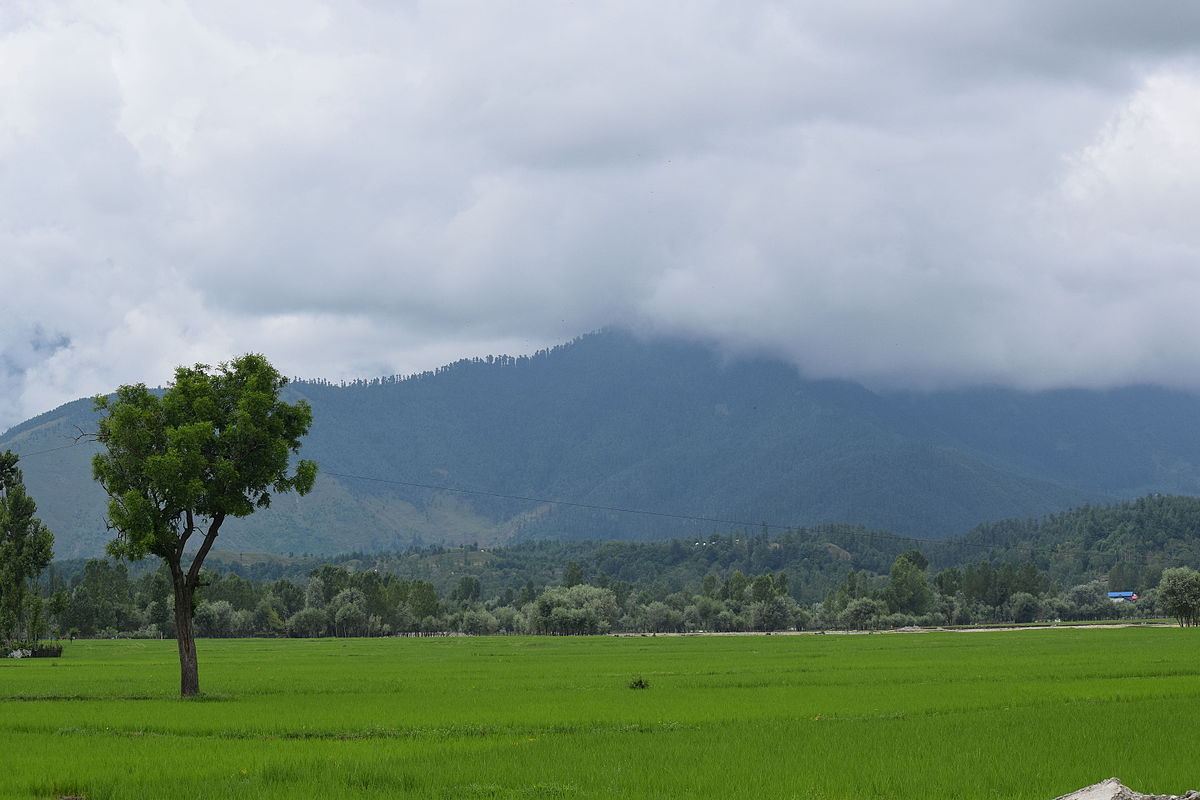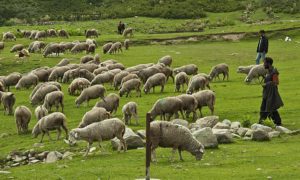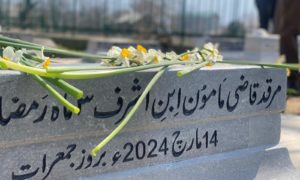It is morning in late summer. The rain pours down, unceasing. The water accumulated in the puddles ripple delicately. From the window of the cab as I held out my hand against thin trickle of the rain, my mind recollecting contrasting images of the houses and courtyards and orchards, thousand scents waft across my memory. I think of my home.
The nagging breeze brushes against my face.
The driver cuts through the serpentine curves. Just ahead, on a flat stretch of road as we near the town-centre, a passing military convoy brings the scant traffic plying on the road to an abrupt halt. In this moment of idleness, as other passengers doze with their eyes open, I try to read a newspaper, paging through its oil stained pages. I am being gawked at by a peering woman with a gaze which is curious, investigative.
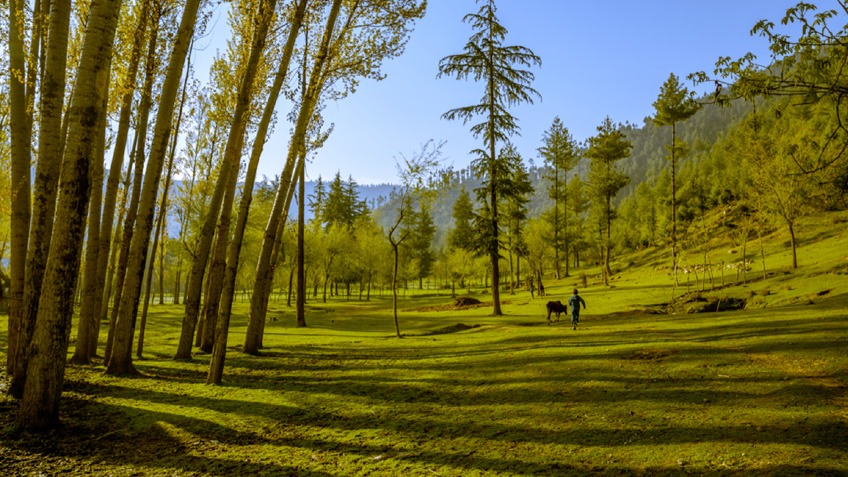
The headline is catchy, something of a promised plebiscite which has now been, in its entirety, reduced to a mere political gimmick.
Kashmir awaits its freedom.
Moments later a whistle is sounded. It is an ear-splitting shrill noise signaling stranded vehicles to move. Half an hour’s impatient waiting comes to an end. There is a sudden bustle in the surroundings marking cessation of the unworldly hush. A flapping of a nondescript bird and its mellifluous cooing enchants me. Now, engines whine and at the directive of the Indian Army manning the peripheries of the town, our cab, driven by a burly old man, starts moving out of the traffic maze, kicking up a cloud of dust. The last olive green truck passes by, and disappears in the morning mist. I catch a fleeting glimpse of a trailing blackish smoke in the driver’s greasy side mirror as we set off.
Lolab is a forlorn valley in Kashmir. It is in the north, some odd hundred kilometers from the capital city, Srinagar. It is my war torn home. The name of the place might suggest a mention of a pristine meadow in a Wordsworth poem. And further, thinking of it one might as well get a picture of a vast pasture, ringed by forests, on a rising slope, herds of sheep and impatient shepherds steering them ahead clear of the way.
In a remote setting on a little hill a thatched farmstead with a small garden in the backyard, a miniature stream flowing past, gurgling, and daffodils fluttering in the downy breeze. But nothing of it is reality. Lolab is an ugly military garrison. It’s a prototype of a panopticon.
Barbs fortifying bunkers, spooled concertina sprawling along the margins of roads, the army patrolling streets, wiring broken communication lines, flagging cars down, searching inexistent pockets in the coats and shirts for ammunition, asking for identities, questioning hours on end, about things unmeant and vague.
The drive past the river which flows in its quaint calm between sparse population of the willows which line the highway on the left comes to a final halt in the town, Kupwara, where I board another cab at the bus stop.
I look around from the window. My eyes locate ravens hovering over a heap of garbage. I hear meva vendors shouting prices of bananas.
From here, I calculate, it would take us not more than two minutes to reach to the entrance of the valley which is a huddle of houses hanging precariously above the narrow unbending road, the litter scattered across, a water line burst dripping wet, stink of decaying dung, the gloom of the wasteland.
Further ahead a provocative greeting indicating the presence of India in the valley : a scrawling in white against a cement gate, announcing, Indian Army welcomes you. To where in our own home?
Here and everywhere
Is my home, wherever
I turn.
The army cantonment is spread to over acres of fertile land. A weapon-detector, which has been installed sometime back, takes x-ray films of the vehicles passing over it.
Only after this elaborate security check a vehicle gets clearance to move on from the sentry. It was more strenuous before. The buses were asked to halt at a check point. Each gunnysack on the roof of the bus was felt from outside. The army frisking, making inquiries, and more often than not mistaking cucumbers for pistols.
The big gates which remain open now throughout the day and night, would close at seven in the evening after which no vehicular movement was allowed. The valley was locked down in its sepulchral silence.
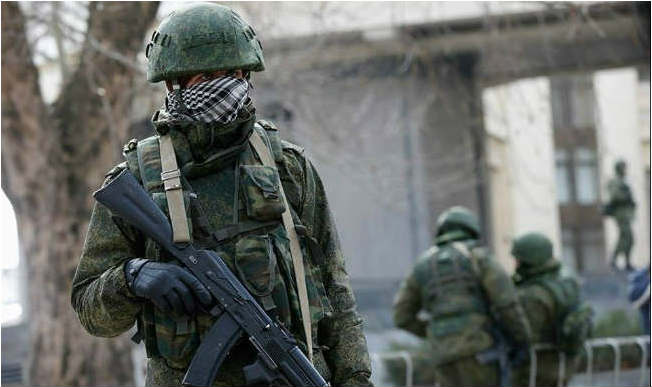
Representational image.
As a child I remember my mother asking me to work the window of my seat down in a bus while we were crossing the barracks.
To my amazement it had stuck. “Why mother?” I had asked with a pained surprise. “Ha! Because to them we are all terrorists.” I looked askance at her. There are no innocents in a condemned land. The directions, as that man behind us in the bus explained to me that day, were that any vehicle passing by a barrack shouldn’t keep windows open. They fear an assault, that in the guise of a ripe apple, someone might throw a grenade and blow them up.
Over the years they have grabbed more land, felled more trees, more than wood smugglers would have, constructed more posts, more barracks with enormous cobbled courtyards and flower beds, laid more concertina, with an obvious, more apparent, intention of furthering the occupation.
As we are crossing the camp I train my eyes at the gates we have left behind. The army men walk in regimental ranks to their barracks. I look ahead of the road. I know I am back home after many months and I am happy but despaired at having confronted by the reality of our predicament, I am overpowered by an emotion of grief.
I want to cry. I want to shout in a void in the sky. AZAADI. AZAADI. AZAADI.
In this valley as in any other parts of Kashmir there are countless barracks. They are atop hills, on the knolls, in orchards, in abandoned housings, cinemas. On a particular knoll where I have always imagined a windmill, its blades rotating perpetually, behind it a mansion draped in the verdure of ivy, now in its place sits a sand bunker, an ugly sight to consider, a thin column of smoke billowing from it, and the way up to the bunker from the foothill, littered with shards of broken rum bottles.
Little distance ahead of the cantonment, within walking distance of almost nothing a park has been laid a year ago, purportedly for tourists who hardly ever visit, and two cement pillars erected flanking the wavy tarmac, still under construction of sorts.
Towards left, just near the pillars, an open landing where army tests artillery. The paradoxes of our part of the world where roar of a bullet welcomes you in your own home.
The public transportation is sluggish, so on occasions it might take one more than an hour to reach Sogam, centre of the valley. The thoroughfare snakes through the dense forests winding around houses along the way, facing each other across the road.
Sogam wears a gaunt untidy look. The conglomeration of shabby shack-like shops threaten to collapse. A mosque down the road is the center of attention, and its green orb adorns the drab monotony of the vicinity. The thoroughfare runs, bifurcates and intersects at almost two places, then running again along the sway of orchards and paddy fields, connecting rest of the valley, south and beyond, to Sogam.
There are places to visit in the valley though, but impossible to mention a name of a place one can visit without mentioning the presence of the army in that place. They are everywhere like nettle, proliferating. Chandigham, for instance, unadultered beauty, has a military presence since the times when my father was of my age, its forests harboring variety of wildlife during his youth – stages, fowls, birds – now devoid of all wildlife. They have vanished.
In early 20’s a public park, now behind the mosque in Sogam, was transformed into martyrs graveyard. The buried were often foreign to the soil. Their corpses, mutilated badly, that one was moved to tears seeing how brutal a human can be to a fellow human. Each limb severed with a cutlass, eyes gouged out, and head split into two.
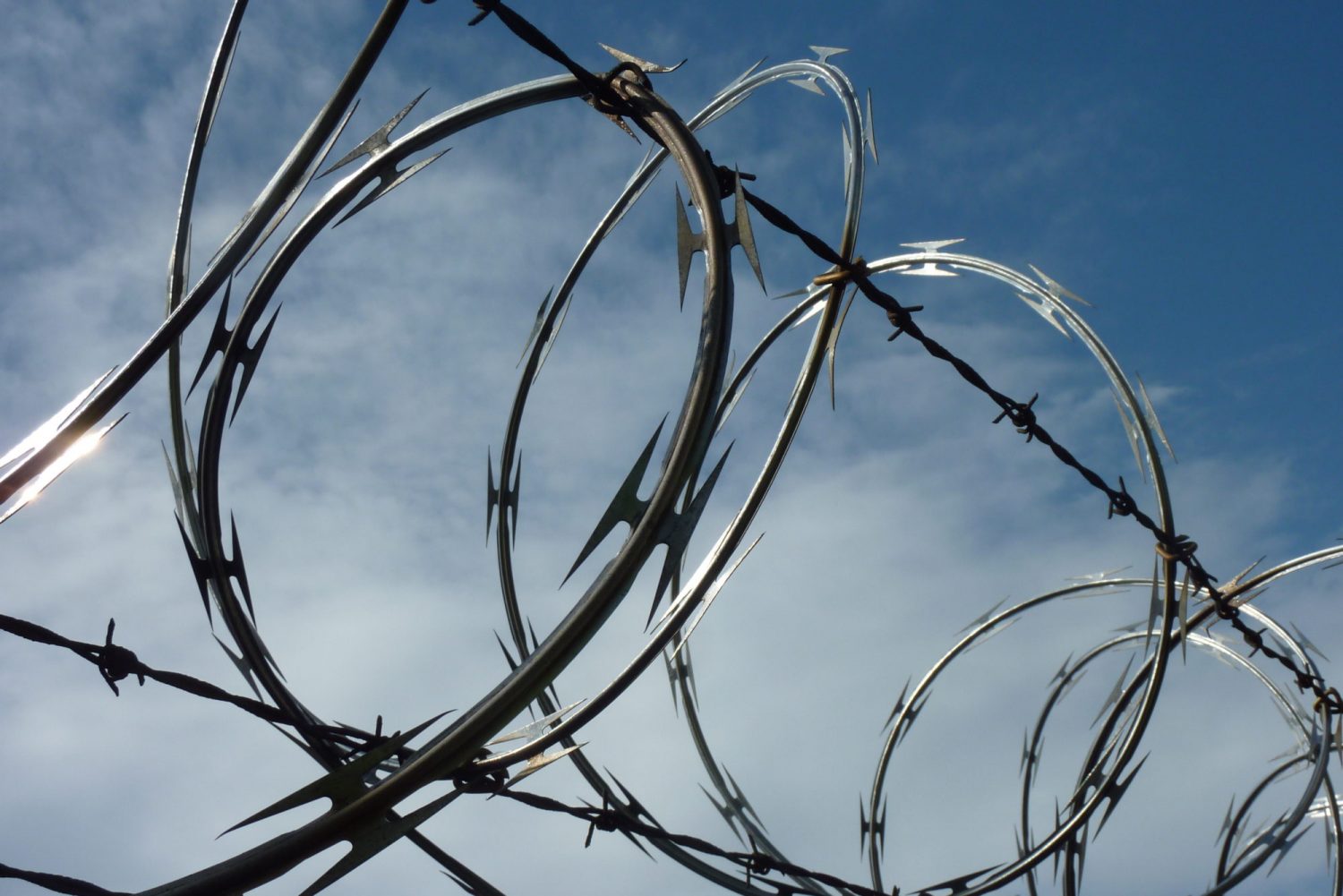
The haphazard growth of the grass has covered the graveyard in a muss of green. The irises stick out in twos and threes. They remind us that the graves are still there. That martyrs are alive, their wounds from bullets of the enemy still afresh and bleeding, their memory in the fragrance of carnations trailing along the fence.
Some distance away from the centre of the valley, our little village sits in the lap of the forests where I grew up in a perpetual horror of getting hit by a bullet.
The village shares its burnt of violence. An old man, killed by army just outside his home in a fake encounter, was reported to the media as a dreaded militant. Later that evening his wife died of a heart stroke after hearing the news of the killing of her husband. Machil happened much later. I try to capture the old couple in my mind. The sumo driver plays a bollywood number. An old man objects to it. He extends his finger to turn the stereo off and is cut short. A handsome looking guy, our driver, saves him a trouble.
A hush ensues.
I close my eyes. I hear the old couple recounting the incident in the heaven.
They are sitting on the porch in sun and he is telling her how he was killed. He tells her he had tried to run away after getting caught in the crossfire. That’s very much a human instinct. She is listening. He tells her he was crossing the fence when he was shot. The bullet tore through his kameez and hit him in the back. He fell on the ground. They came running, dragged him to the end of the road and fired more bullets in the air. Then? She asks him, and he tells her he was dead and he could only see his funeral later.
She tells him she knows what had transpired later. “They had blackened your face with shoe polish, your beard was desecrated. They had photographed you. They had made you wear a combat outfit. In the photographs your finger was on the trigger of an automatic rifle. They had told people that you were a dreaded militant. You were some Al-Gazali. They had fired more bullets into your chest after you were dead.” He shudders with fear. He asks her how did she die. She tells her she couldn’t bear his death. He looks at his scars. She tells her if she had not died of a heart stroke she would have died every day of his absence.
I reach home. The tin roofed two storey houses are in close vicinity to each other. Looking from the sloping road, the verandah of each house is hidden from the view by long row of soft light-colored poplars. I pay my fare, and head home. I walk in a street in silence unmindful of who is looking at me, who I am greeting until I stand before my house in my courtyard. My mother comes out and kisses me. I greet her. She leads me into the house.
Later in the day I tell her about my disappointments.
Close to the evening when the electricity is snapped, the din of the generator drowns every whisper in its vibrations, and someone remarking, referring to military as ‘they’ who occupy a hillock, their post just above our house, looks like they have started the primeval beast.


